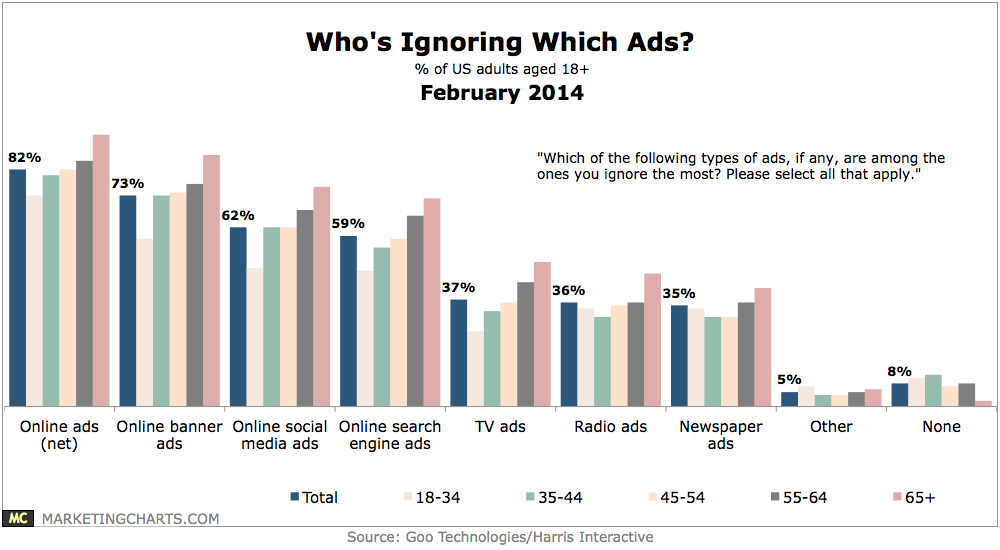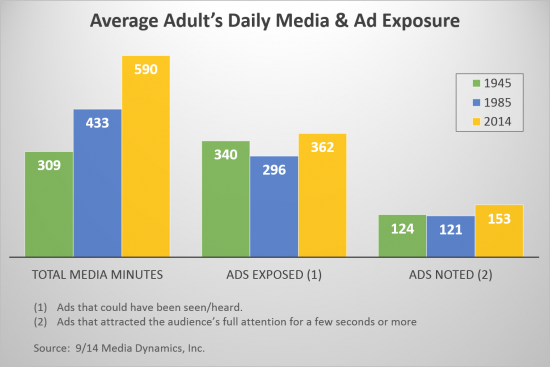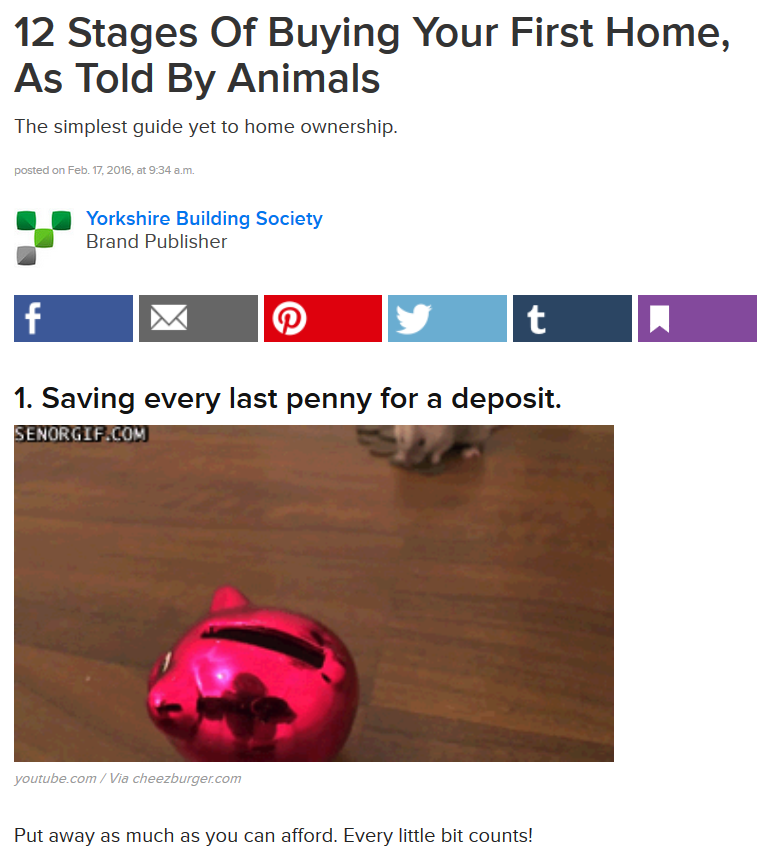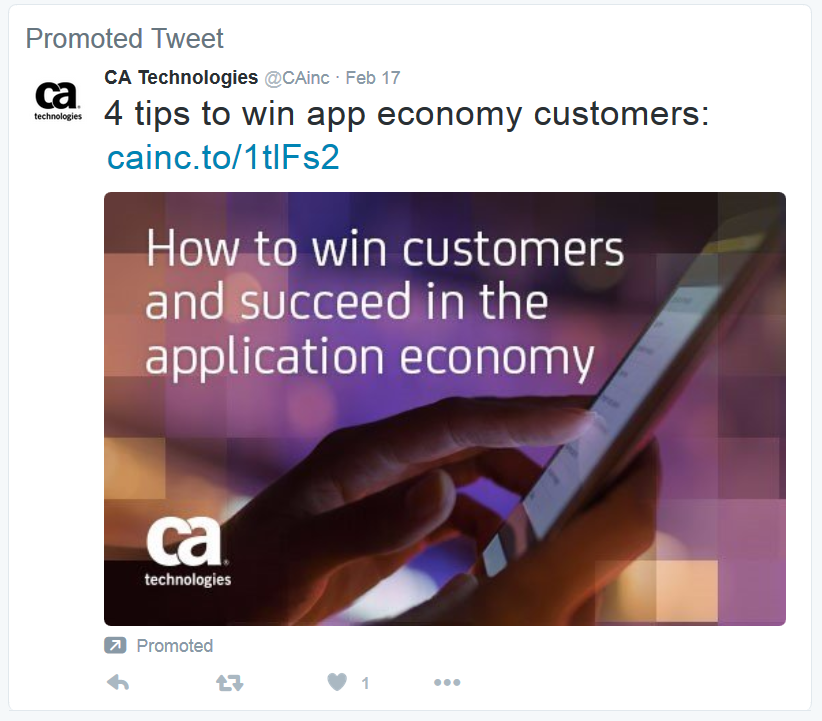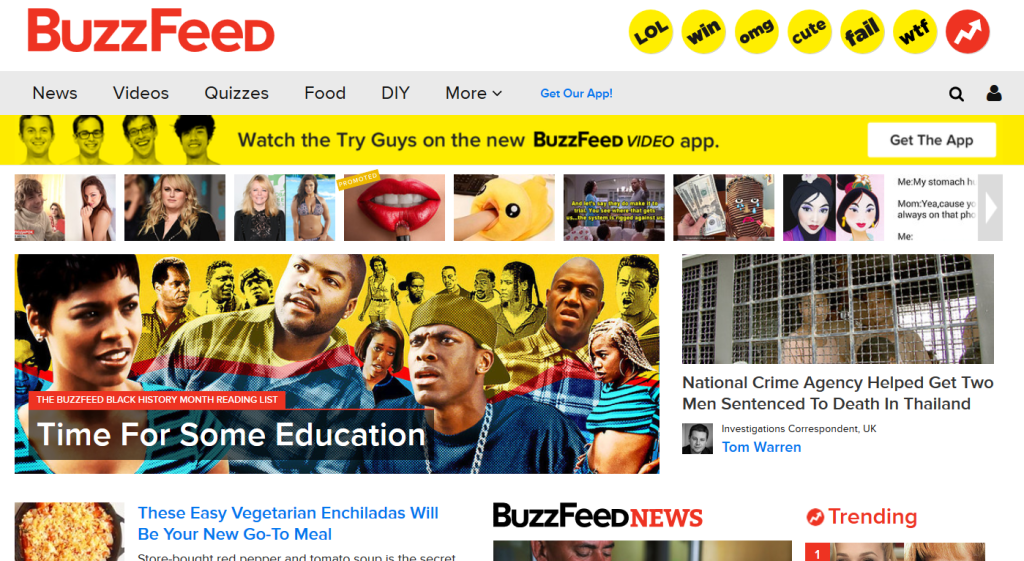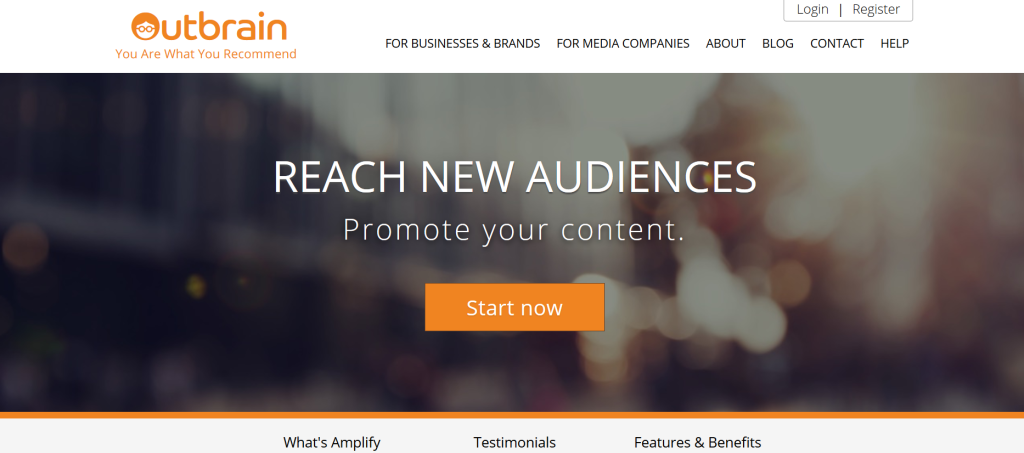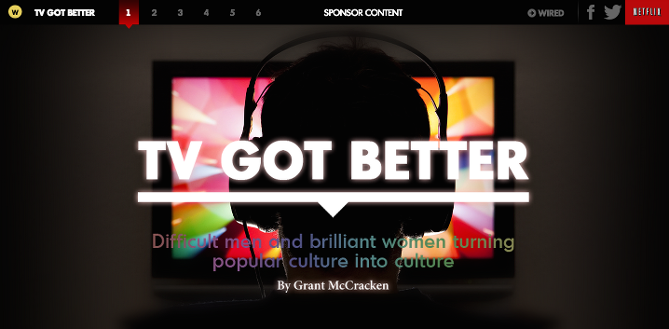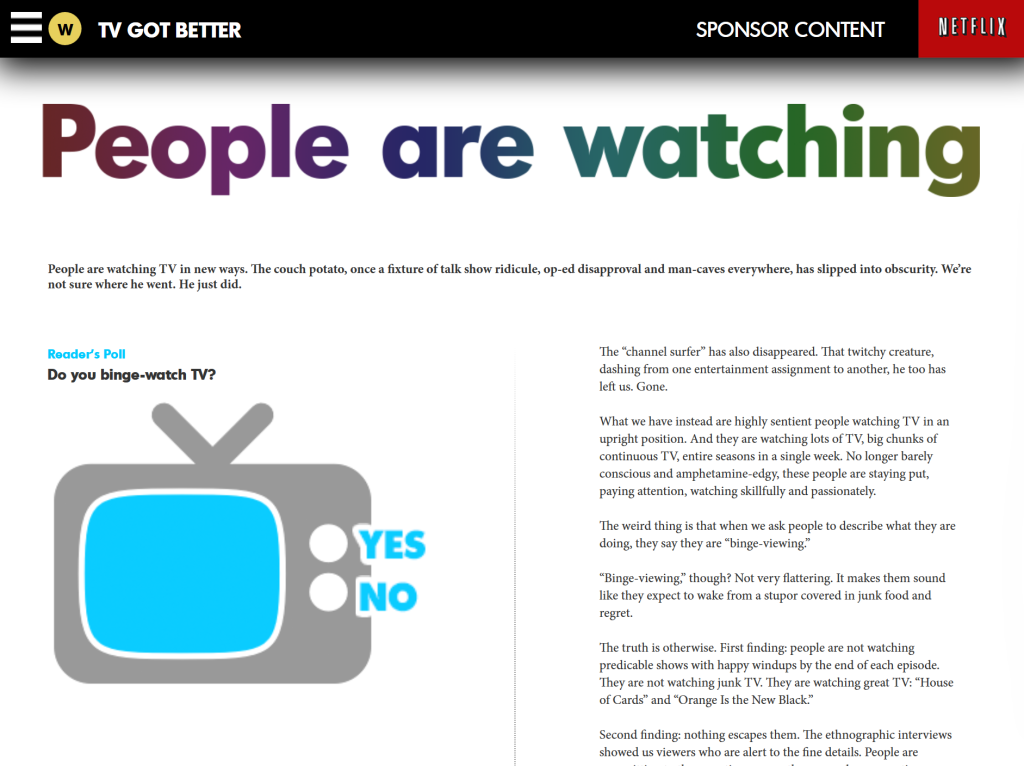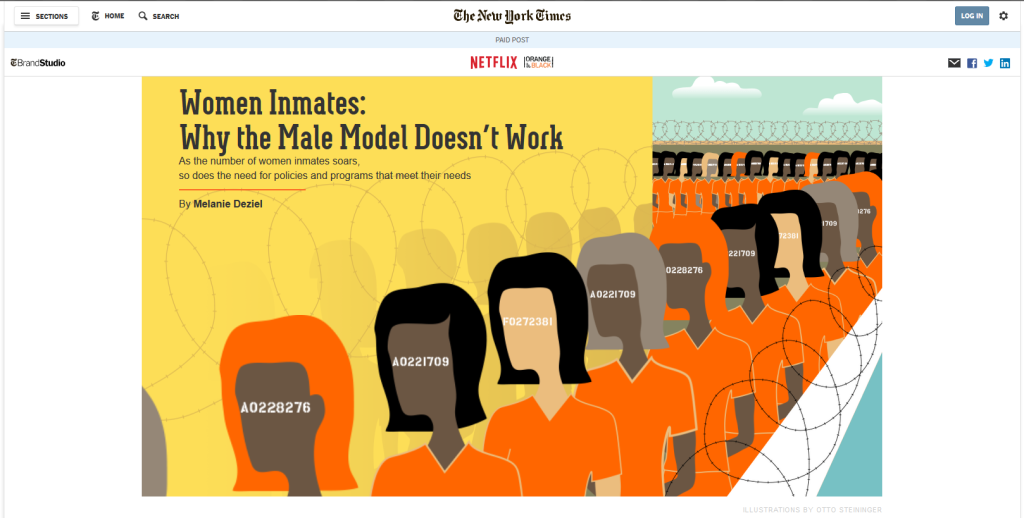Imagine you’re browsing through a news website when you come to a story that catches your eye.
- It features a particular product – let’s say, a shoe shining kit – and the article says that an enterprising artist has used the entire kit to create paintings of famous celebrities.
- This sounds like an interesting premise, and the pictures are really impressive. You’re pleased with the article, and reminded that it’s been awhile since you last shined your smart shoes.
Congratulations: you have just successfully engaged with a native advert.
Why Marketers Need Native Advertising
There’s a problem facing marketers online.
Users are getting more and more savvy. It’s easier than ever before for someone to spot an advertisement online, and when one pops up, they’re going to ignore it.
- The average click through rate for online ads is down to a 0.06%.
Promoted search results fare a little better, but they’re still less than ideal.
- 59% of search engine users claim that they ignore paid ads at the top of searches.
It’s no wonder it’s hard to get an audience to look at an ad: users are being bombarded with them constantly.
- The average person sees 362 advertisements per day, and only 153 are able to grab their attention for more than a few seconds.
- With that many messages buzzing around, it makes sense that the brain starts filtering them out: it’s hard to keep track of that much noise.
This all ties in with a rise in the use of ad-blocking technology, as more and more internet users get fed up with constant promotional messages and do their best to opt out of all forms of advertising online.
On the whole, internet users don’t like their browsing experience to be broken up by advertisements. Sometimes even waiting five seconds for a YouTube ad to finish is too much.
What’s more, the brands that make use of traditional online advertising opportunities are finding it increasingly difficult to connect with their audiences.
- Cynical viewers are getting better at ignoring the messages in ads.
- If an internet user spots an ad, they tend to quickly scroll past it or move on to different content.
- In some cases, user frustration at annoying ads can even actually damage the brand’s reputation and make it harder to connect with future audiences.
In trying to come up with a solution to these problems, advertisers have been looking for ways to make their ads more resonant in the modern age of media oversaturation.
- Some marketers go for bigger, brighter, bolder ads that draw in attention.
- These typically only tend to resonate when the company throws a lot of money into their advertising campaign – this isn’t an option for all businesses.
Alternatively, other marketers are trying more subtle tactics to get their message across. A good native advert:
- Can’t draw attention to itself
- Can’t break up the user’s internet experience
- Communicates a message without the viewer having the chance to switch off or tune out.
For many marketers, the secret to achieving advertisements with these characteristics is getting started with native advertising.
What is Native Advertising?
You’ve definitely seen a native advert before while browsing online.
- You might have also noticed it, but often, native ads don’t get spotted by users.
- They work on the basis of making content blend in as much as possible.
It’s difficult to give a precise definition of native advertising, because the concept is naturally very vague – this is the whole idea behind this form of marketing.
The main idea with native advertising is blending an advert seamlessly into regular content, so that audiences don’t even spot that anything is out of the ordinary.
This can be done through:
- Promoted articles on a blog or news site
- Sponsored social media posts
- Content that subtly references a company while not being primarily about their products, which appears on a popular platform.
There are plenty of forms of native advertisements out there, but if you’ve ever seen an article that says it’s ‘promoted’, this is an example.
Of course, if something says it’s promoted, that means it’s not an ideal type of native advertising.
Not all native advertising is clearly labeled – while promoted tweets which appear on Twitter announce that they’re an advertisement, there are more subtle ways of getting the message to users without them spotting an advert.
- Sometimes ad companies will directly pay online influencers to mention a product in passing.
- This means that the ad blends in perfectly with everything else on the user’s social media feed, and has the benefit of coming from a credible source.
That said, the reason so many native advertisements explicitly state that they’re sponsored or promoted content is due to legal and moral issues surrounding online advertisements.
- Media platforms have to be very clear what content is paid for and what is not so that users are not led astray – failing to do so can lead to advertisements getting banned.
- It can also be damaging to a media platform’s credibility if users spot sneaky advertisements that attempt to flat-out trick users.
- Plus, media groups or personalities can end up being embarrassed if the content doesn’t match up to their normal standards of quality, and will not want to risk their reputation.
In spite of these limitations, there are plenty of ways to create subtle, powerful native advertising.
- New ideas for native advertising are being developed all the time.
- Ideally, these involve blending advertisements with content seamlessly so that users don’t even notice they’re being told about a product.
A variety of platforms are eager to get involved publishing your content through native advertising – for struggling online newspapers who are seeing ad revenue crumble, it’s a great way for platforms to monetize their services.
- Back in 2014, the website for the New York Times went very public with its announcement that the platform would be redesigned to generate more revenue through native advertising, making it clear to all its readers that this content was something they could expect to see more of.
When native marketing works well, users browsing a site will engage with an advertisement just as they would with any other article or piece of content on a website.
Getting Started with Native Advertising
If you’re looking to distribute some effective native advertising content, there are several different avenues you can pursue:
- You can begin talks directly with the advertising teams behind notable publications and platforms
- Alternatively, you can go through an intermediary service or network
Direct Negotiations
If you’re looking to produce the highest quality content that blends in best with the site you’re displaying on, you’ll want to communicate with the platform directly.
Sites which welcome advertiser inquiries include:
Depending on your budget, approaching platforms directly can end up being quite expensive, but it has plenty of benefits:
- It can give you the best placement of content
- The dedicated advertising teams will work with you to make sure that your advertising matches the tone and style of the rest of the content on the site.
Even if you’re not sure whether a particular site allows native advertisements, if they match your target audience and you feel they’re a good fit, it’s worth inquiring with their advertising team to see what they can do.
Using Native Advert Networks
Alternatively, you can look into using a service which is designed to place your native ads on the right websites.
This can be beneficial if:
- You don’t have the budget for a direct native advertising campaign on a specific site
- You’re looking to get your content on as many sites as possible
- You want greater control over the design and style of your content on the various sites it’ll appear on.
There are a lot of services that are designed to help you get your advertisements in front of the right people. Here are some of my personal favorites:
Sharethrough
This is a useful service if you’re looking to get your ads on popular platforms but you don’t want to work directly with the sites in question.
Sharethrough works with a variety of big-name online brands, and can get your ads appearing on sites like Time, Forbes, People, and Men’s Health.
It works in a similar way to most online ad services, except your content ends up appearing as articles on sites rather than as ad banners.
It’s fairly easy to start editing and publishing content, and Sharethrough even lets you preview your ads to see how they’ll appear on various websites to make sure they don’t look out of place.
Finally, Sharethrough has a full array of analytics tools, so that you’re able to track the progress of your campaign and see what content might need tweaking. These tools have helped the platform develop and grow phenomenally over the past few years.
The process isn’t entirely automated – to use Sharethrough you have to enquire directly about gaining access, but once you do so you’ll have direct support throughout the process of setting up your ads.
Outbrain and Taboola
The two biggest names in native advertising networks have the potential to get your content in front of millions of users.
They work a little differently to Sharethrough in that they don’t post content directly onto another website
- Instead, they generate the ‘Around the Web’ and ‘Promoted Stories’ recommendations that you’ll see at the bottom of a lot of websites.
This has its benefits and limitations: firstly, the network is a lot larger, which is a good thing.
That said, users become very aware that they’re moving away from the site they were previously looking at.
- Your content won’t appear directly on the site it’s linked from.
- This means you won’t be able to borrow the trust and reputation of the site to help better soft-sell your company.
In many ways, this is a weaker form of native advertising as it’s only slightly more notable than a traditional banner ad, and click through will be a lot smaller as a result.
If you want to get your content in front of a large audience, though, these platforms can be very useful indeed.
Qualities of a Good Native Advert
The best native advertising doesn’t draw attention to itself.
- The idea isn’t to announce to the world that your company is amazing – native advertising should be almost unnoticeable, changing people’s opinions of your brand without them realizing that anything’s happening.
- Native advertising should also seamlessly blend in with everything around it, maintaining the look, feel and style of the rest of the content on a particular platform.
- Ideally, audiences should have just as much fun with your content as they do with the rest of the content on the site.
It’s important to note that native marketing isn’t the same thing as content marketing – it’s simply one distribution channel for your content.
The intention is to push your content out to audiences, but you’re doing so as quietly as possible.
Let’s have a look at a couple of examples of native marketing, one from print media and one from the internet, to see how this can be done well and what potential pitfalls need to be avoided:
An Example From Print
Before we get into the basics of beginning a native marketing campaign, let’s look at some successful existing advertisements.
First, an offline example. Here’s the front cover of Forbes Magazine from March 2015:
The cover mentions an article on retirement which is inside the magazine – this is one of a series of articles on pensions and investments which are sponsored by the Fidelity investment firm.
Forbes offers many businesses the opportunity to sponsor their articles in order to gain greater notoriety and to let messages that are beneficial to companies seep into the text of the magazine.
The reason this advert works so well is because it’s in a place readers aren’t expecting to see it:
- While magazines are typically full of advertisements, most readers feel they can spot the difference between an advert and an editorial
- This means they’ll trust a sponsored article written to match the Forbes tone more than they’ll trust an advert that’s more blatantly full of PR talk.
- Readers certainly aren’t expecting to see a sneaky ad for Fidelity right on the front of the cover, and its small, unassuming appearance means most readers won’t even notice that it’s an advert at all.
This is what native advertising should do: it should be quiet, well-camouflaged, and fit the tone of the rest of a platform’s content.
That said, it’s also worth noting that, if anything, this ad was too subtle: Forbes suffered a public backlash over the controversy of not clearly identifying the ad on their cover.
If a native advert stands out at all for any reason, even simply because it fails to identify itself, audiences will be more wary about trusting it.
An Example from Online
Next, let’s have a look at Netflix and how the company has used native advertising to grow its brand recognition and notoriety online.
- Netflix has featured native advertising in several high profile online platforms, including Wired and The New York Times.
The Wired article looks directly at the experience of streaming television, the Netflix phenomenon, and why people binge watch television shows online.
As is the case with most of Wired’s content, the article was thorough, detailed, featured multimedia elements, and was engaging and interesting to read.
- The Netflix article blends in perfectly with the rest of Wired’s content, meaning that it’s an enjoyable experience for the reader, and it perfectly matches their expectation for an article from the website.
Of course, it might not be the case that every company can get away with an in-depth article on their own business without it looking like an advert.
- Wired is a good pick for the Netflix ad because discussing online trends fits with the website’s standard content, though not all brands would work for all websites.
Netflix has also sponsored content on The New York Times, but this time, it’s content that’s related to one of their shows.
In 2014, The New York Times ran an article on women in prisons. Again, the article met every typical expectation that readers would have for a New York Times article – the content is detailed, full of plenty of research and unique multimedia content.
The article comes with a large banner advertising Netflix at the top, but apart from this there’s only a single mention of Netflix in the entire article.
- Even this is designed not to draw too much attention directly to Netflix, and instead onto the woman whose memoirs, Orange is the New Black, were turned into an original show for the streaming service.
This piece of native advertising is the pinnacle of subtlety:
- It lets the readers know where the article came from and it gently nudges them towards Netflix programming without being too in-your-face, not too secretive about its intentions.
- It focuses more about drumming up interest in the subject matter, rather than trying to hard-sell Netflix programming.
- Readers are meant to begin thinking about an interesting and controversial topic, discuss it with their colleagues, and then feel impressed to watch Orange is the New Black to continue the debate.
In all your native advertising efforts, this is the smart, subtle to take with your messages.
It doesn’t work if you beat readers over the head with your topic: all you can do is point them in the right direction.
Hitting the Right Tone
What matters most in native advertising is making sure that your content fits so seamlessly with the rest of the site’s articles and media that it’s indistinguishable.
- One of the biggest challenges is making sure you still manage to successfully plug your brand without making it noticeable that you’re pushing people towards your own website.
The trick to getting this balance right comes from understanding what your chosen platform’s audience wants.
- What do website visitors expect to find? How can you make your content better fit their needs?
- What kinds of messages are they used to seeing? What will draw their attention without feeling out of place?
Unfortunately, there’s no single way to achieve this – every online community is different, and every company will feel different when placed within the framework of a particular site.
- It’s important to choose a platform that your content belongs on – as with Netflix, where its tech article appeared on Wired and its human interest piece appeared on The New York Times.
- Tailoring your content to each individual website is key, especially when running a campaign that involves ads on multiple sites.
The key is to blend in – like a chameleon, you need your content to look like it perfectly belongs within its surroundings on a particular site.
If you can find a way to meet users’ expectations and advertise your products without drawing too much attention to your brand, you’ll find native advertising to be a fantastic way to advertise your business.
Have you used native advertising successfully before? If so, share the best tips and tricks you’ve picked up by leaving me a comment below:
Images:
Pixabay, Smart Insights, Marketing Charts, SJ Insights, Buzzfeed, Twitter, Buzzfeed, Buzzfeed, Sharethrough, Outbrain, Taboola, Read Magazines, Wired, The New York Times, Pixabay.





